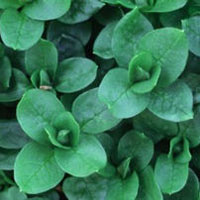Chickweed
Uses
Parts Used & Where Grown
The small, green chickweed plant originated in Europe, but now grows across the United States. The leaves, stems, and flowers are used medicinally.
Our proprietary “Star-Rating” system was developed to help you easily understand the amount of scientific support behind each supplement in relation to a specific health condition. While there is no way to predict whether a vitamin, mineral, or herb will successfully treat or prevent associated health conditions, our unique ratings tell you how well these supplements are understood by the medical community, and whether studies have found them to be effective for other people.
For over a decade, our team has combed through thousands of research articles published in reputable journals. To help you make educated decisions, and to better understand controversial or confusing supplements, our medical experts have digested the science into these three easy-to-follow ratings. We hope this provides you with a helpful resource to make informed decisions towards your health and well-being.
3 Stars Reliable and relatively consistent scientific data showing a substantial health benefit.
2 Stars Contradictory, insufficient, or preliminary studies suggesting a health benefit or minimal health benefit.
1 Star For an herb, supported by traditional use but minimal or no scientific evidence. For a supplement, little scientific support.
This supplement has been used in connection with the following health conditions:
| Used for | Why |
|---|---|
|
1 Star
Breast-Feeding Support
Refer to label instructions
|
Chickweed is a soothing herb that can relieve sore nipples. Experts recommend moistening the herb with boiling water, wrapping it in gauze, and applying to the breasts.
For sore nipples, some healthcare practitioners may recommend a warm, moist poultice of herbs with demulcent (soothing) properties. Demulcents are traditionally used to aid healing and soothe any irritated tissue. Examples of herbs traditionally used as demulcents to relieve sore nipples are marigold (Calendula officinalis), comfrey (Symphytum officinalis), and (Stellaria media). To prepare a poultice, the dried herbs are moistened with boiling water and wrapped within two layers of gauze. The poultice is then applied to the breasts. Application of a hot water bottle over the poultice will keep the poultice warm longer. Any residue should be washed from the breast before the baby breast-feeds. Individuals wishing to use herbs during breast-feeding should do so only under the supervision of a qualified healthcare practitioner. |
|
1 Star
Eczema
Refer to label instructions
|
Topical preparations containing calendula, chickweed, or oak bark have been used traditionally to treat people with eczema.
|
|
1 Star
Insect Bites and Stings
Refer to label instructions
|
Chickweed is sometimes used topically to alleviate itching secondary to insect bites. It contains relatively high amounts of vitamins, which may partly explain its use as a topical treatment for skin irritations and itching.
Chickweed is sometimes used topically to alleviate itching secondary to insect bites. It is often applied as a cream several times daily to rashes and inflammatory skin conditions, such as eczema, to ease itching and inflammation. The active constituents in chickweed are largely unknown. It contains relatively high amounts of vitamins (such as vitamin C) and flavonoids, which may partly explain its use as a topical treatment for skin irritations and itching.
|
|
1 Star
Poison Oak/Ivy
Refer to label instructions
|
Chickweed has been used historically to treat skin inflammations such as poison oak and poison ivy.
A great many plants have been used historically to treat skin inflammations like poison oak and poison ivy dermatitis. Examples include calendula (Calendula officinalis), blood root (Sanguinaria canadensis), Virginia snakeroot (Aristolachia serpentaria), holy basil (Ocimum tenuifolium), and (Stellaria media). None of these remedies has been subjected to controlled clinical studies to determine if they are safe and effective for this use. Cooling essential oils, such as peppermint and menthol, have also been used topically to relieve burning pain and itch. Such oils should not be applied full-strength, but should rather be diluted (for example in lotion or gel) to avoid further skin irritation. |
Traditional Use (May Not Be Supported by Scientific Studies)
Chickweed was reportedly used at times for food.1 It enjoys a reputation in folk medicine for treating a wide spectrum of conditions, ranging from asthma and indigestion to skin diseases such as eczema and psoriasis. It is sometimes used to alleviate itching secondary to insect bites.
How It Works
How It Works
The active constituents in chickweed are largely unknown. It contains relatively high amounts of vitamins (e.g. vitamin C) and flavonoids, which may partly explain its effectiveness as a topical treatment for skin irritations and itching. Although some older information suggests a possible benefit for chickweed in rheumatic conditions, this has not been validated in clinical trials.2
How to Use It
Although formerly used as a tea, chickweed is mainly used today as a cream applied liberally several times each day to rashes and inflammatory skin conditions (e.g., eczema) to ease itching and inflammation.3 As a tincture, 1/4–1 teaspoon (1–5 ml) per day can be taken three times per day. Two teaspoonfuls (10 grams) of the dried herb may also be drunk as a tea three times daily.
Interactions
Interactions with Supplements, Foods, & Other Compounds
Interactions with Medicines
Last Review: 05-24-2015

Copyright © 2025 TraceGains, Inc. All rights reserved.
Learn more about TraceGains, the company.
The information presented by TraceGains is for informational purposes only. It is based on scientific studies (human, animal, or in vitro), clinical experience, or traditional usage as cited in each article. The results reported may not necessarily occur in all individuals. For many of the conditions discussed, treatment with prescription or over the counter medication is also available. Consult your doctor, practitioner, and/or pharmacist for any health problem and before using any supplements or before making any changes in prescribed medications. Information expires December 2025.



